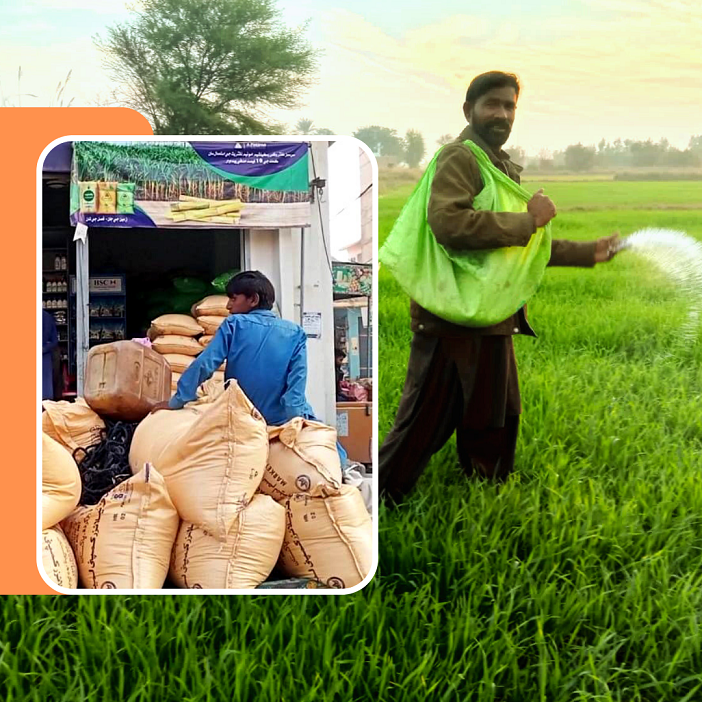Farmers in Ghotki district have staged multiple protests within a month to highlight the shortage of fertilizers. On November 30, demonstrations were organised in front of the Deputy Commissioner (DC) and Assistant Commissioner (AC) offices.
A video depicting a tense confrontation between AC Rida Talpar and participants of a sit-in in Khanpur Mehr has gained traction on social media. In the video, AC Rida Talpar responded to protesting farmers, asserting, "It is not within my authority to provide fertilizer; that falls under the jurisdiction of agriculture. It's akin to expecting me to find proposals for your children tomorrow."
Haji Khan Korai resides in Rang Ali Shah, a suburb of Mirpur Mathilo. Cultivating wheat on his ten-acre land, he shares that he purchased a bag of urea fertilizer for five thousand rupees.
"I've been visiting shops for several days. It's cruel that the shopkeeper who sold me the fertilizer didn't even provide a receipt."
Official data indicates that 51 per cent of Ghotki district, equivalent to eight lakh 17 thousand acres, is cultivable. Among these, wheat has been cultivated on two lakh 71 thousand 700 acres, and sugarcane on one lakh 54 thousand 140 acres.

Ghotki district is among the top four districts in Sindh province in terms of area under cultivation and production of wheat.
In 2021, more than three 75 thousand metric tons of production was obtained from an area of more than two lakh 76 thousand acres in this district. In 2022, wheat was cultivated on an area of about two lakh 69 thousand acres, which yielded more than two lakh 88 thousand metric tons.
In 2023, two lakh 89 thousand and 646 metric tons were produced from an area of two lakh 66 thousand and 421 acres in Ghotki district. Within a year, the wheat cultivable area decreased, and the production also saw a decline of 87 thousand tons.
In addition to Ghotki, Khairpur, Nowshero Feroze, and Sanghar have the largest wheat cultivation areas.
Niaz Khoso, the Additional Director of Agriculture in Ghotki, mentions that the official target for wheat cultivation was approximately three and a half lakh acres this time, which has been achieved. The department had requested 10 lakh 84 thousand and 700 sacks of urea for this purpose.
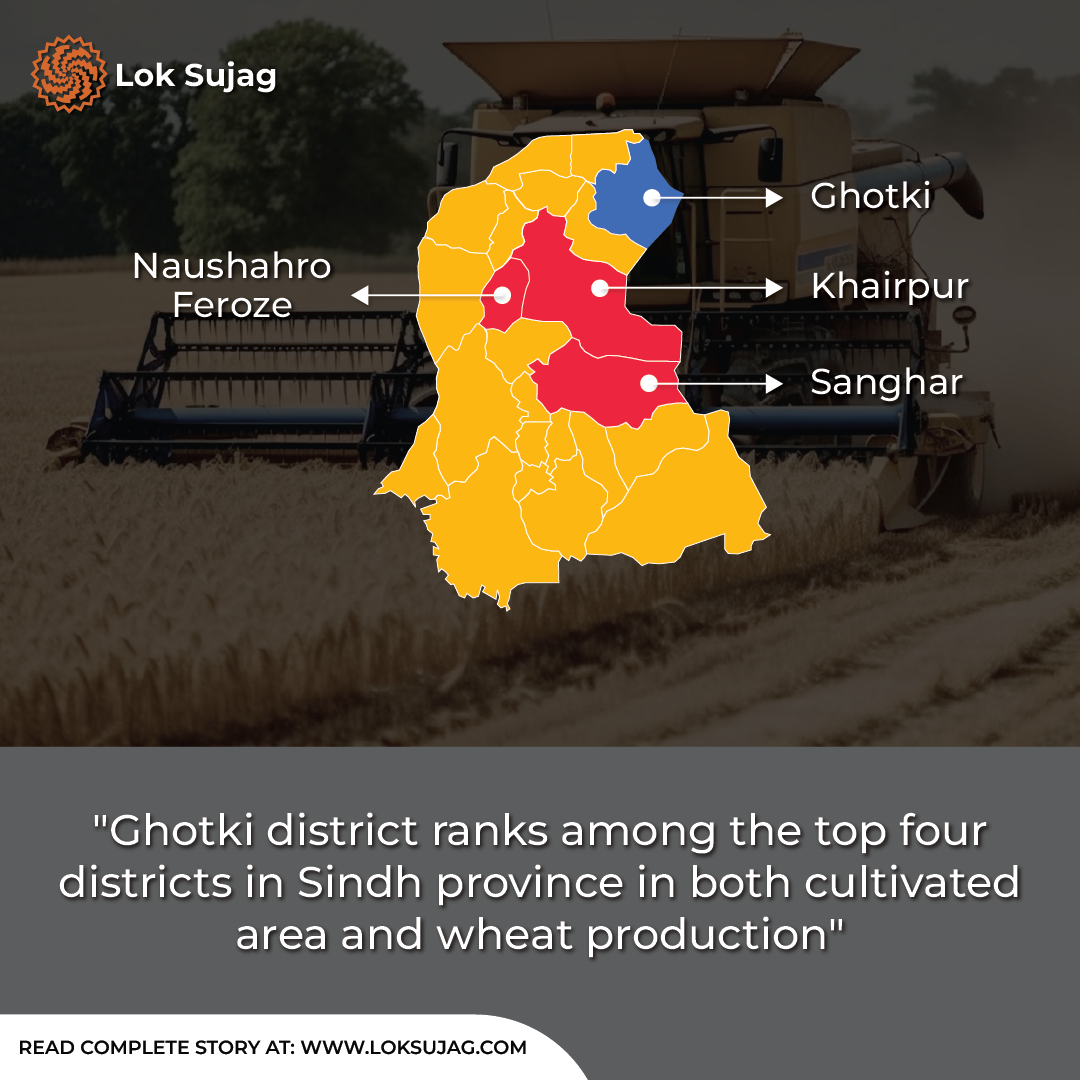
The Department of Agriculture received information from fertilizer companies indicating that over six hundred 71 thousand and 129 sacks of various fertilizers, including urea and DAP, were distributed to 24 dealers in the district over three months.
But it is also a fact that the urea crisis will not end.
Farmers are purchasing sacks of fertilizer at rates exceeding the government-set price, reaching up to Rs. 5,500 instead of the official rate of Rs. 3,700.
Abdul Hadi Chachadar, a landlord from Obaro on the Punjab border, has cultivated 40 acres of wheat. He emphasises that timely fertilizer delivery is crucial, as any delay could impede wheat growth, resulting in significant losses for the farmers.
"The irony is that despite having three large fertilizer factories in our vicinity, we still need to wander around to get each sack."
Ghotki district hosts two significant fertilizer manufacturing plants, one owned by Fauji Fertilizers and the other by Engro. The third factory, Fatima Fertilizers, is situated 50 km away in Sadiqabad. These three plants have an annual production capacity of approximately 2.5 million tonnes of urea.
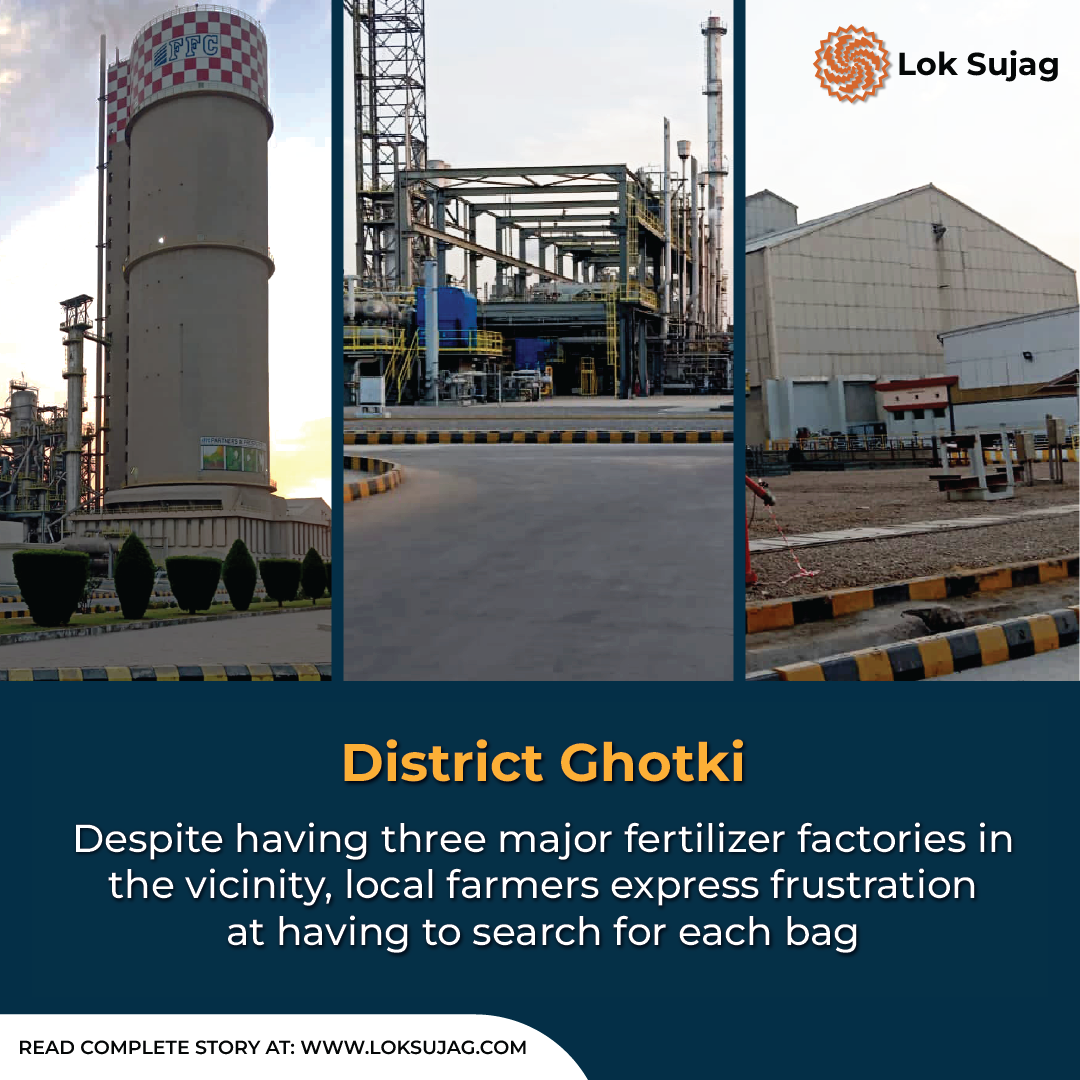
Agriculture department experts assert that the demand for urea in the Ghotki district from October to January is approximately five lakh sacks. Even if the information provided by the fertilizer companies to the Agriculture Department is accurate, there should not have been a fertiliser shortage in the region.
Simultaneously, the administration has implemented measures to address the fertilizer shortage. On November 7, AC Deharki imposed fines totalling Rs 95,000 on five dealers. Similarly, three dealers faced fines of Rs 50,000 in Ghotki and Rs 40,000 in Mirpur Mathilo.
Similarly, on December 6, three dealers in Deharki faced fines totalling two and a half lakhs.
Meanwhile, Assistant Commissioner Khangarh conducted raids on various godowns, resulting in the sealing of two facilities.
But these actions did not make any difference.
On November 27, Deputy Commissioner Ghotki, Agha Sher Zaman, penned a letter to the three fertilizer factories. The letter highlighted that 70 per cent of the population in Ghotki district relies on agriculture. The fertilizer shortage could lead to law and order issues and negatively impact the wheat crop.
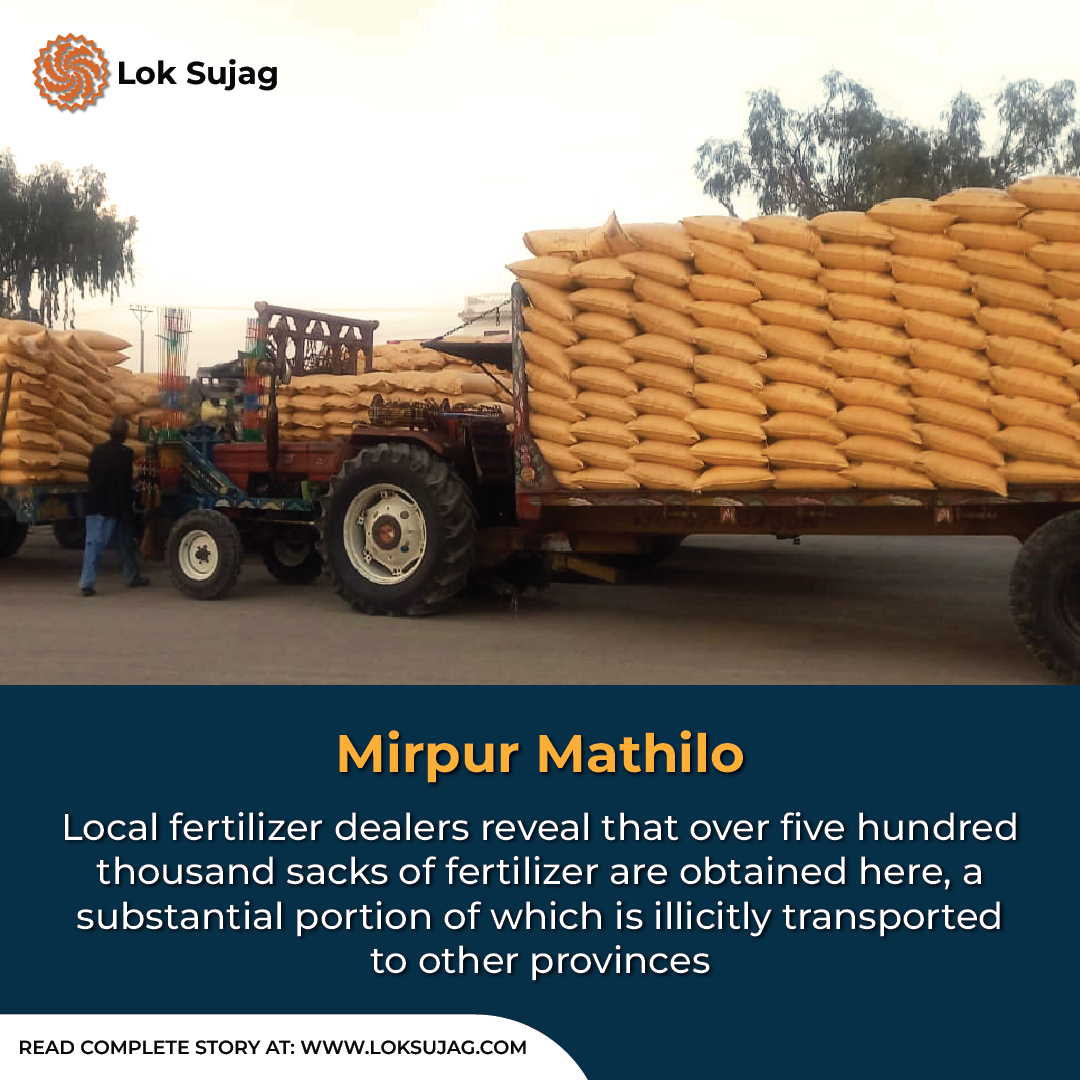
"So the institutions should end the fertilizer crisis by increasing the district quota and also play their role in stopping hoarding."
Mirpur Mathilo dealer Pawan Kumar says that the district faced a shortage due to the supply of 50,000 sacks of urea less than the quota to dealers last month. The consumption in this district is around five lakh sacks until January.
He alleges that local dealers acquire over five lakh sacks of fertilizer, most of which they reportedly smuggle to distant provinces. He claims this is contributing to the fertiliser shortage in the region.
SSP Ghotki, Anwar Khetran, supports Pawan Kumar's assertion on fertilizer smuggling, stating that the owner of Faisal Goods Transport Base in Deharki is engaged in dumping urea.
"The police have seized a truck loaded with 600 sacks of urea, filed a case, and urged the fertilizer companies to revoke the base's license."
Also Read
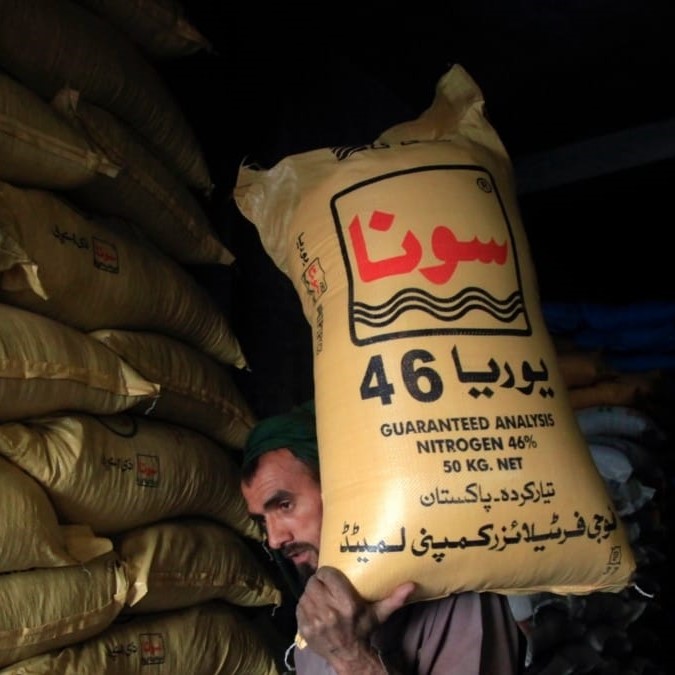
DAP fertiliser crisis hits Bhakkar District during wheat cultivation
He mentions that at the Sindh-Punjab border, the police halt vehicles loaded with fertilizer. However, company owners claim them as their dealers, and they are allowed to pass. Anwar Khetran emphasises that, without an agriculture department officer with the police, they cannot effectively handle this issue alone.
In the first week of this month, a meeting chaired by the Deputy Commissioner was convened to address the fertilizer shortage and curb illicit profiteering. Directives were issued to neighbouring districts to prevent unauthorised transfers and establish a checkpoint at Obaro Toll Plaza.
During the meeting, representatives from fertilizer companies were urged to allocate an extra 50,000 sacks in the quotas for December and January.
FFC marketing officer Waqar Hussain attributes the crisis to the farmers, stating that there is no fertiliser shortage and that farmers, with sufficient financial means, are over-purchasing by buying 150 sacks when they only need 50.
Waqar Hussain says that farmers justify their increased purchases by claiming that fertilizer prices rise daily, prompting them to stock up.
He explains that companies produce fertilizer for the December demand, but farmers purchase fertilizer for January and February as well. This mismatch between supply and demand inevitably leads to shortages.
Proper fertilization of the wheat crop is crucial. Muhammad Ali Mehr, an agricultural graduate and local landowner, highlights that the crop typically undergoes four rounds of fertilization. The initial application occurs two to four weeks after sowing, followed by the second application two weeks later.
"We also need to consider weather conditions and soil fertility. Applying three to four sacks per acre for wheat crops is common. The final round of fertilizer is applied during grain formation."
Published on 1 Jan 2024
